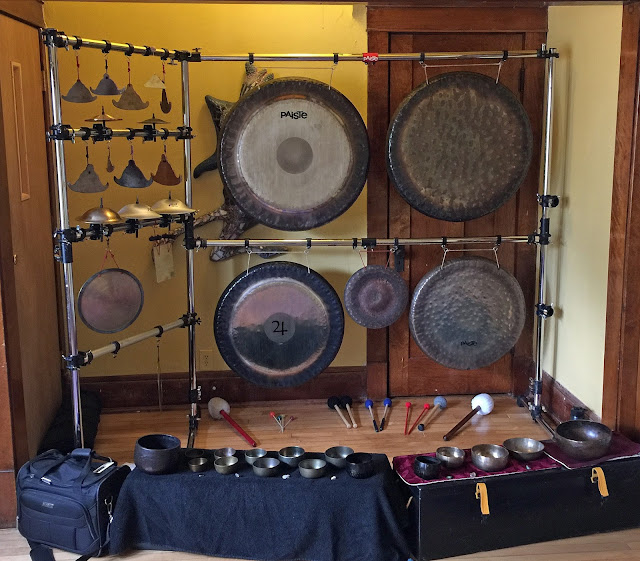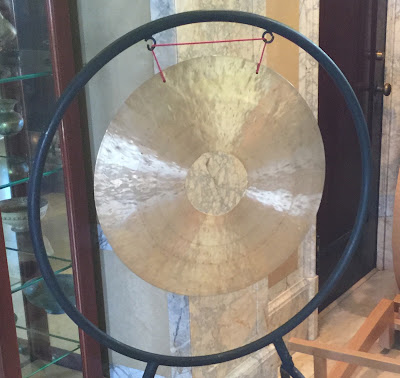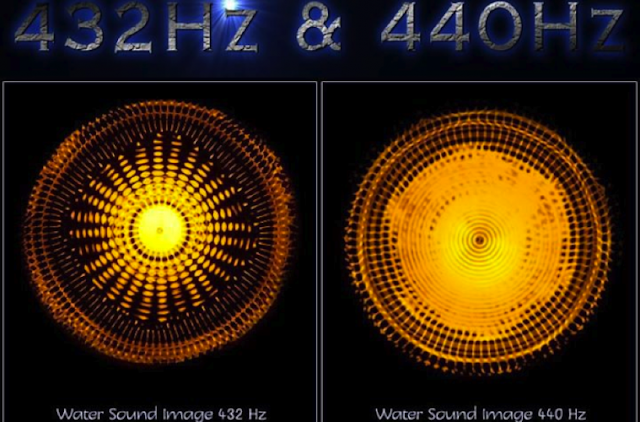Further Adventures in 432Hz and Other Tunings
I just read another Facebook thread on the ‘432Hz’ tuning idea. This is actually something I’ve spent a lot of time and research investigating, because I find this whole idea of a ‘fixed tuning’ fascinating. I think too many people make a big deal out of tunings in the West, like it's some sort of academic thing filled with hidden meanings, or there's some sort of conspiracy behind it all. Unless you play in an orchestra or band with other musicians, or you play to written sheet music, tunings don’t really matter much.
Another aspect of this is that the Western world (Europe/USA/Canada) is but a small part of the world. If you travel to other areas (Asia, India, Africa, Central & South America, Australia, Siberia, etc.), traditionally, they have no idea of an ‘A=440/etc.’ tuning. They have different tunings, different scales, different modes. (unfortunately, today we find much indigenous music ‘polluted’ by our Western musical ideas)
I'm very much into Asian gong music of all types, from all different regions. Each traditional gong maker has their own tuning system which is not based on the Western scale. And while the intervals may be systematic (like pentatonic), the starting note/pitch isn't fixed. Thus in Bali/Indonesia, each gamelan set is unique unto itself, and you can't mix instruments from one set with another. That's why if you want a whole massive gamelan set up, you have to either buy a complete set up or have one made for you. You can't piece one together from buying instruments here and there, because the tuning won’t match. This can even go for gamelan sets made by the same maker. The same goes for the Kulintang ensemble from the Philippines and other similar gong sets/families in SE Asia.
Now in the West, back in the time of Bach, Beethoven, etc., music was very regional and each composer had their own master tuning fork (you can Google this). These tuning forks all varied in the exact pitch of ‘A’. But again, music was very regional and often court or church based, and it didn’t get played out of its region, so it was no big deal. Church musicians often used a tuning based on the church organ, which much like their Asian gamelan counterparts, were often tuned specific to the maker. Another aspect of this is that composers, especially of opera, often based the tuning note/pitch of an opera on the vocal range/tuning of the ‘stars’ they wrote it for. And again, because music and life in general was very regional, instrument tunings often varied from region to region. (if you want to know more, just Google it and do your research like I have over the years)
As music began to travel, you had the problem of orchestras playing music that was composed in one tuning, played in a different tuning that they used. That became more of a problem as time went on and Western music spread globally. So eventually an ‘A’ tuning note was established to put everybody in the same tuning, so all written music would essentially sound the same (as the composer wanted) as it traveled around the Western world, and eventually to the rest of the world. And this has even changed, whereas A=440 was the established standard, many orchestras now use A=442, which adds a bit of ‘brightness’ to things. Now this is a real pain for percussionists who have their mallet instruments in one tuning, because unlike most other instruments, you can't change that tuning. When you order a new marimba, you specify it it needs to be A=440, or A=442. This is a real pain. (I have over 2 octaves of Dream MBAO tuned gongs and I'm not sure what the 'A' tuning note is. It doesn't even say on their website. Their tuned bell plates specify 'Tuning: A=440 (others available on request)', so I imagine the gongs are 440 also, but I never bothered to ask.)
Guitarists have been tuning their guitars to different ‘A’s’ and different tunings for a long time. A good experiment with this is to tune any one string to an arbitrary pitch/note by ear, then tune the rest of the guitar to that string. Everything you play will be ‘in tune’ with itself.’ But if you try to play along with someone else who has a guitar tuned to A=440, they will most likely clash.
And this brings us to gongs and bowls, which other than specific ‘tuned gongs’ (tuned to the Western scale), or ‘Planet Tuned’ instruments (don’t get me started on that), are all arbitrarily tuned, especially Asian instruments. You just can’t go out and buy an A=440 singing bowl (although I know there are specifically tuned bowls made today in 2021), as the bowls are just made, and the tuning is whatever it is. That is why when you see a “Chakra set” of bowls for sale, most (if not all bowls) will be sharp or flat of the exact Western note specified! (I’m talking about metal bowls here, crystal bowls are another thing entirely). The same thing with gongs: get 10 Chau or Wind gongs of the same size together and you will have 10 different pitches. Get 100 together and you will have 100 different pitches which a few very close, but I doubt you would have any exact matches.
So where does this leave us as gong and bowl players? It leaves us to work with what we have and to find the deeper meaning in the sounds/pitches we have. No 2 of us have the same sounds/pitches. So why should we be worried about any sort of set ’tuning note’? How many of us have a full set up of gongs and bowls (and other related instruments) that are tuned to exact concert pitch notes (whether 440, 442, 432, 428, etc)? No one—and if someone does, please contact me and let’s discuss it).
In conclusion, thanks for bearing with me, I leave you with an example a recent video I posted of Mike Tamburo and myself playing together for the very first time. We each have large setups with gongs, bowls, bells, and instruments of all types. My setup is tuned to itself, with each instrument picked by my ears to fit in. I use my main 32” symphonic gong as the tuning note when buying and matching new instruments. I have a lot of the same type gongs, bowls and bells that don’t work with this specific setup, so they stay home and are used for other things. So when I buy something, I don’t care what the pitch/note is, other than “does it fit in my setup?”
I think Mike is much the same way, although I believe his bell plates on the video (and maybe a few other things) are tuned to ‘just intonation’ (Google it), so he has some sort of tuning scheme. Our sets are very different in sounds and tuning, but we make them work together for the most part. There was no need for us to have all of our instruments tuned to the same ‘A’ or anything else.
Music is too wide and varied for those restrictions. We had never played together before, but were able to make music. Now whether what we made you find, pleasant, ‘healing’, or whatever, is completely up to you, as it should be. So let’s stop with being so preoccupied with ‘tunings’ and just get on with making music!



Comments
Post a Comment